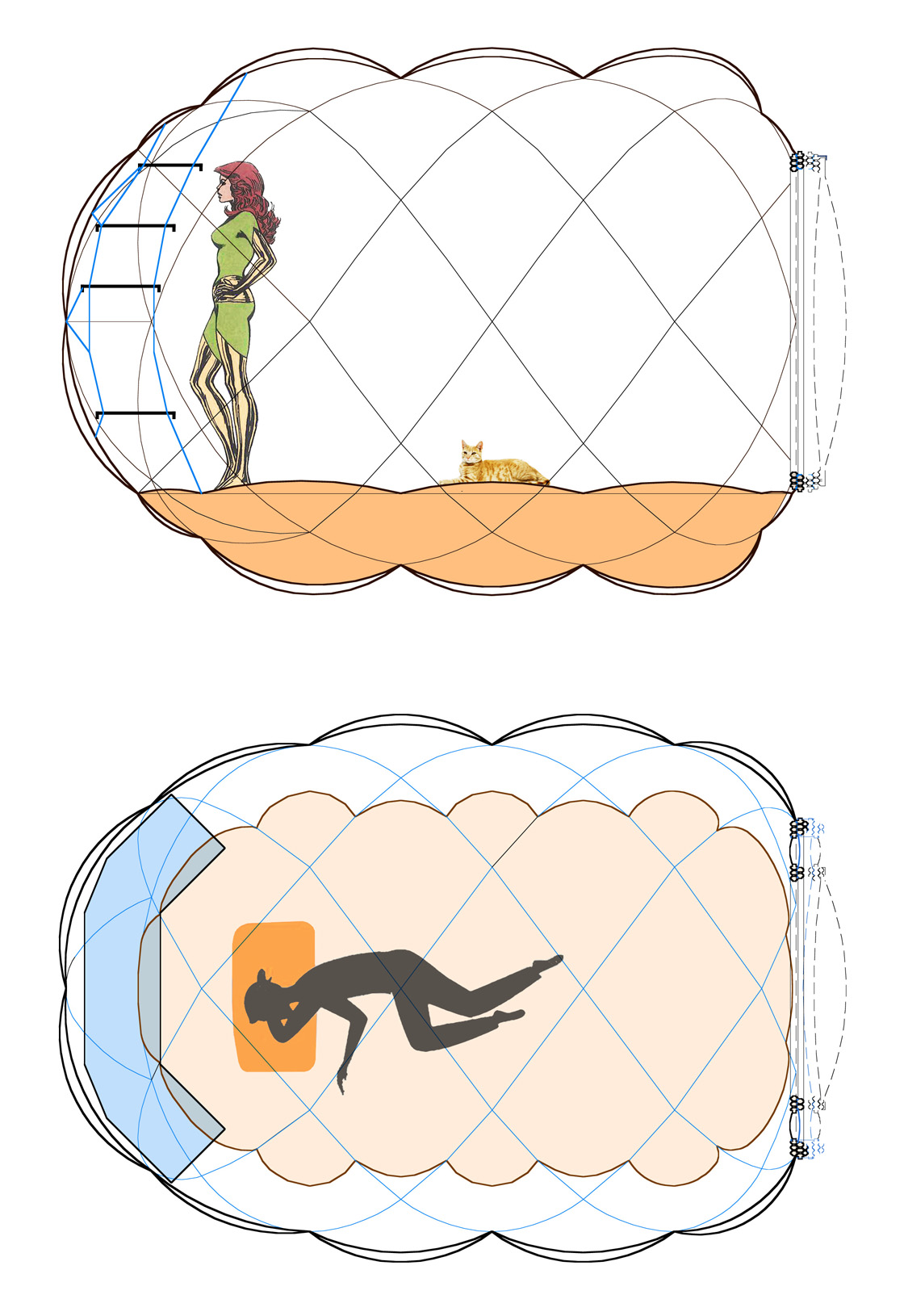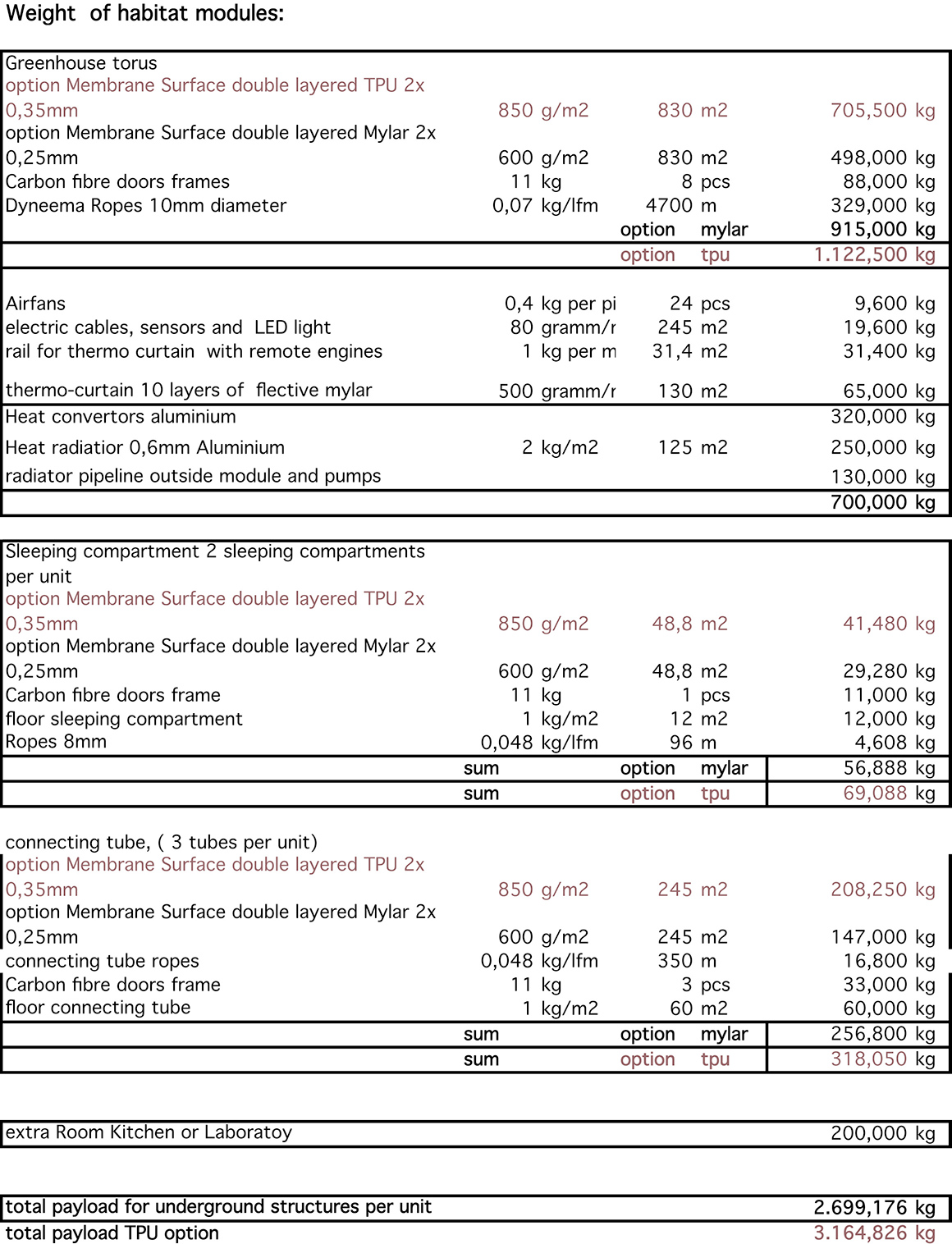3. Structure
To reduce the stress on the inflatable membrane structure, we provide 500 millibar or half of atmospheric pressure inside only, which is equal to the air pressure on the peak of the Mont Blanc, the highest mountain of the Alps. We compensate the low air pressure with a higher oxygen content of 35%, which was the level on Earth during the carboniferous period.


But even at 500 millibar the inner pressure is 50 kilonewtons, equal to 5000kgs per square meter at Earth gravity. In comparison, the weight of the regolith deposit is almost negligible. At lunar gravity a 4 meters high deposit of regolith only presses down with a force of approximately 11 kilonewton.
This makes structural 3D printed walls or ceilings obsolete and we can significantly reduce the risk , the payload mass and the energy requirement involved with the time consuming 3D print process.
The greenhouse torus has a cross-sectional radius of 260cm times a compressive force of 5N/cm2, this results in a tensile stress of 1300N per cm of membrane
Clear, transparent, non-fiber-reinforced membranes would not withstand such a load, or unrealistic material thicknesses would be required.
Mylar Membrane has a tensile strength of 200N/mm2
TPU only has a permissible tensile strength of 25N/mm2
Therefore, the inflatable membrane structure has to be wrapped in a net made of highly tear-resistant Dyneema ropes, which can absorb these high forces.
In this way, the foil only has to withstand the relatively small tensile stress that culminates within the relatively small area within a rope net mesh due to the air pressure.
We choose a Dyneema rope with a diameter of 10mm, which has a breaking load of 100kN.
The distance between the ropes is 30.8 cm at the narrowest point on the inside and 58 cm on the outside. So, in 44cm as an average. At 1.3kN per cm this results in 57.2KN for each rope. However, since the ropes run diagonally in two directions and cross each other, this load is ideally equally distributed over two
ropes, each of which can take 100kN.
The diameter of the tunnel is only half as large at 260cm and therefore the static load due to the internal pressure is also only half as large. Therefore, for the tunnel, the spacing of the ropes can be larger. Since no transparent components are provided here, a fiber-reinforced foil can be used, which can also withstand the load within a large rope net mesh.

Floor plan of greenhouse module and connecting tunnel module.

Sleeping compartment

Connecting tunnel module

Gym: the much lower gravity allows seemingly greater athletic performance. People can fly with buckled wings. When running in a circle, the centrifugal force is 6 times as strong. Climbing on wall and ceiling with Velcro gloves like a gecko.

Kitchen module

Terrestrial prototype of an inflatable cylinder reinforced with a cable net, made in 2020

As shown in these sheets, the payload of the inflatable structure and the CFRP-tube truss-fame structure is extremely low. Commas mark the decimal fraction.
